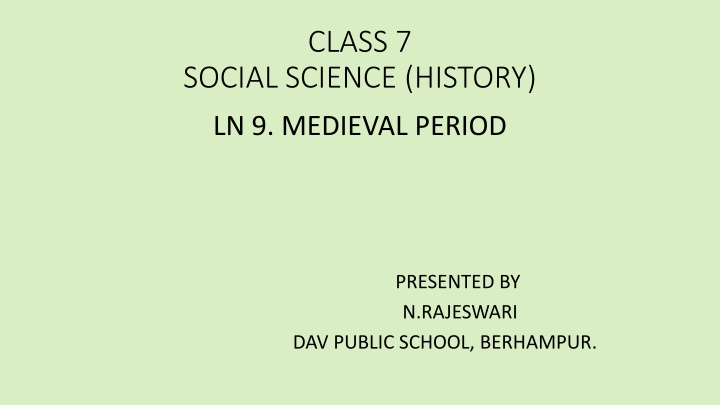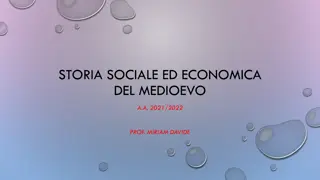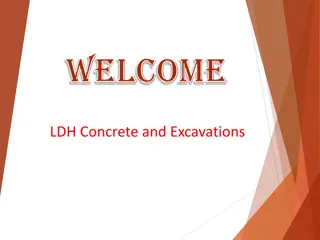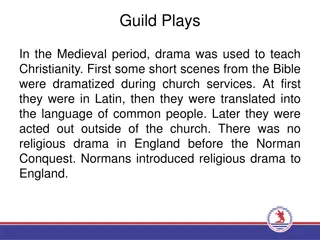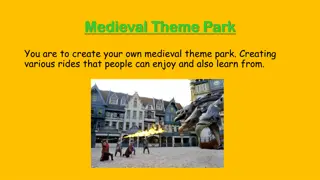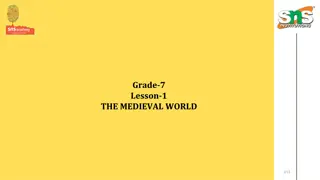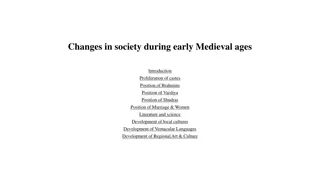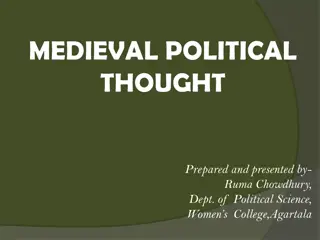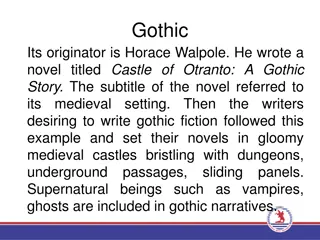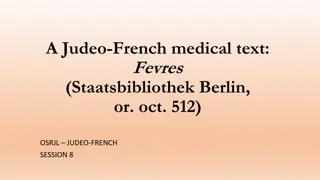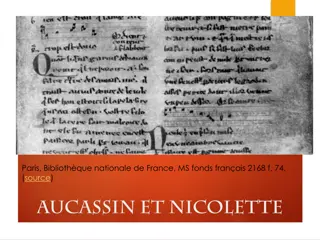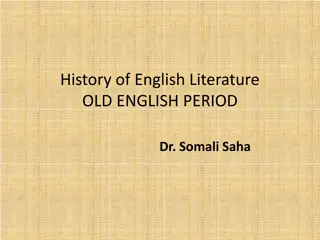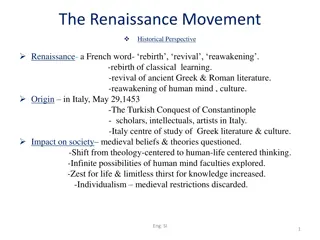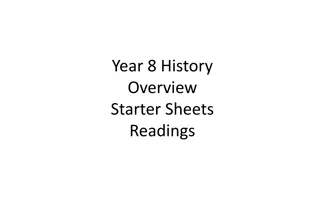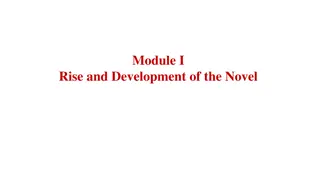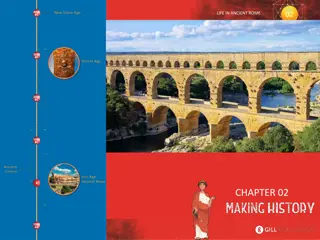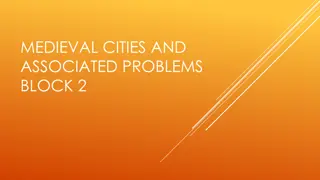Unveiling Medieval Period Through Literature and Excavations
Literature, both religious and non-religious, along with excavations of medieval towns, sarais, and monuments, provide valuable insights into the social, economic, political, and military conditions of the medieval period. Works like "Prithviraj Raso" shed light on the life of people, while archaeological findings offer a glimpse into various aspects of society.
Download Presentation

Please find below an Image/Link to download the presentation.
The content on the website is provided AS IS for your information and personal use only. It may not be sold, licensed, or shared on other websites without obtaining consent from the author.If you encounter any issues during the download, it is possible that the publisher has removed the file from their server.
You are allowed to download the files provided on this website for personal or commercial use, subject to the condition that they are used lawfully. All files are the property of their respective owners.
The content on the website is provided AS IS for your information and personal use only. It may not be sold, licensed, or shared on other websites without obtaining consent from the author.
E N D
Presentation Transcript
CLASS 7 SOCIAL SCIENCE (HISTORY) LN 9. MEDIEVAL PERIOD PRESENTED BY N.RAJESWARI DAV PUBLIC SCHOOL, BERHAMPUR.
Literature consist of RELIGIOUS & NON-RELIGIOUS. From religious works & commentaries- Puranas, Smrities etc, we get information about the social, economic, political& military conditions of medieval period. From non-Religious works on medicine, astronomy, dramas, stories etc. The autobiographies, orders of the rulers & letters written during this period also helps us to understand the life of the people. For ex- PRITHVIRAJ RASO written by CHAND BARDAI.
Excavation of medieval towns, sarais, villages, monuments, sculptures, coins, inscriptions etc. give us a lot of information about different aspects of the society.
Some of the important technological development of this period are as follows; 1. The Persian wheel was used for irrigation. 2. The spinning wheel made the weaving of clothes easier. 3. Fire arms introduced in combats. 4. Paper was introduced for writing.
Learn the following questions & answers 1. What sources do the historians use for the study of a particular period of history? Ans. The historians use the sources like coins,inscriptions, architectures & textual records for the study of specific period. 2. What do you mean by archives? Ans. Archives were the places where manuscripts, records, documents collected. 3. Who were scribes? Ans. Scribes were those professionals who used to copy down the manuscripts.
4. Why are coins& inscriptions important for the study of medieval period? Ans. Coins & inscriptions tell us about the reigning periods of kings and give us dates of important political events. It tell us about the economy of the kingdom & trade with other regions. 5. What development took place in technology ? Ans. 1. The Persian wheel was used for irrigation. 2. The spinning wheel made the weaving of clothes easier. 3. Fire arms were introduced in combats. 4. Paper was introduced for writing.
Answer the following questions. 1. Who wrote Prithiviraj Raso? 2. Name the language in which Ain-i-Akbari was written. 3. Which period is known as the medieval period in Indian history? 4. Name the foreign visitors who wrote travel accounts of medieval period.
QUESTIONS 1. Name any five rivers on the map. 2. Name the kingdoms who ruled India during the medieval period. 3. How many kingdoms are located on the banks of the rivers?
